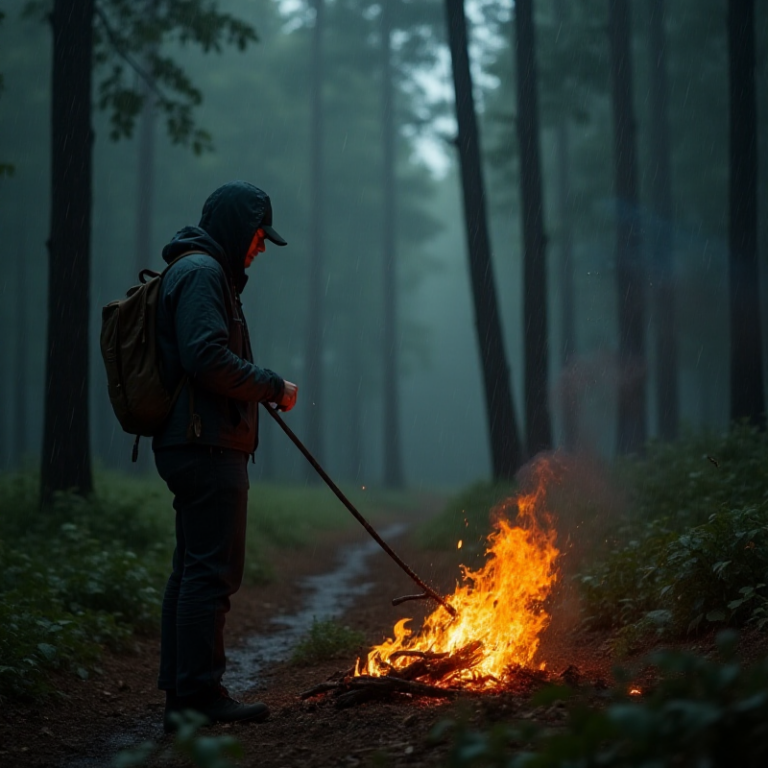Wet wood fire starting is a critical skill for campers, survivalists, and anyone venturing into the wild. When rain or damp conditions leave your surroundings soaked, knowing how to ignite a fire with wet wood can keep you warm, dry, and safe. With the right tools, materials, and techniques, you can overcome even the most challenging conditions to successfully build a fire.
Why Wet Wood Fire Starting Is a Challenge
Starting a fire with wet wood is difficult because moisture makes wood less flammable and slows down combustion. To succeed, you need to focus on three essential steps: locating suitable wood, preparing it properly, and using effective ignition techniques.
Locating Usable Wood
Even in wet conditions, you can often find dry or relatively dry wood by searching carefully:
- Look Above Ground: Dead branches that are off the ground or attached to trees are less likely to be saturated.
- Split Logs for Dry Core: Large logs may be wet on the outside, but their inner core is often dry.
- Collect Thin Twigs or Bark: Smaller pieces of wood, such as pine needles or birch bark, dry faster and can catch fire more easily.
Preparing Wet Wood For Ignition
Remove Damp Layers
Start by stripping away the wet outer layer of wood. Use a knife to carve down to the dry inner sections. Exposing this dry material will greatly improve your chances of success.
Create Feather Sticks
Feather sticks are made by carving thin, curly shavings from a piece of wood. These delicate curls catch fire quickly and can help ignite larger pieces of damp wood.
Find or Carry Tinder
Dry tinder is essential for wet wood fire starting. Look for natural tinder, such as dry leaves under rocks, birch bark (which contains natural oils), or pack your own waterproof tinder, like dryer lint or cotton balls soaked in petroleum jelly.
Building and Igniting a Fire
Use Dependable Fire Starters
In damp environments, traditional matches may not work. Always carry reliable fire-starting tools such as waterproof matches, a ferrocerium rod, or a magnesium fire starter. These create sparks hot enough to ignite even stubborn tinder.
Construct a Sturdy Fire Structure
The way you build your fire affects its ability to sustain flames in wet conditions. Try these structures:
- Teepee Structure: Arrange kindling in a cone shape around the tinder to concentrate heat.
- Log Cabin Structure: Build a square stack of larger wood around the fire’s core to protect and dry additional fuel.
Gradually Add Larger Pieces
Start by burning small sticks and twigs, and then move to slightly larger branches. Damp wood dries out as it burns, so patience is key.
Expert Tips for Wet Wood Fire Starting
- Dry Wood Near the Fire: Place damp wood close to the flames to dry it out before adding it to the fire.
- Carry Emergency Fire Supplies: Pack a small bag of dry kindling, fatwood, or pre-made fire starters in your survival kit.
- Use Fatwood or Resin-Rich Materials: Fatwood is naturally resin-rich and burns hot, making it perfect for igniting wet wood.
Practice Makes Perfect
Learning wet wood fire starting takes practice, so don’t wait until it’s an emergency to try these techniques. Test your skills during a camping trip or in a controlled environment. Regular practice ensures you’ll be ready to build a fire in any situation.



